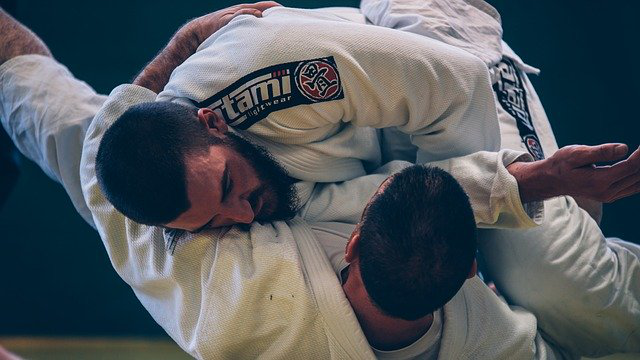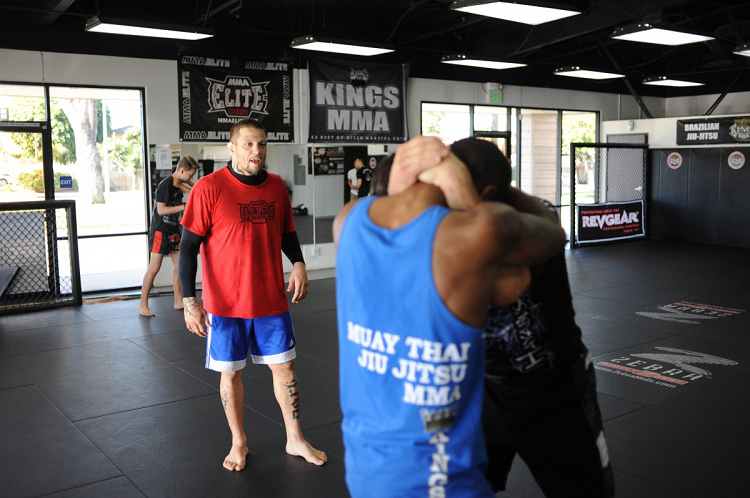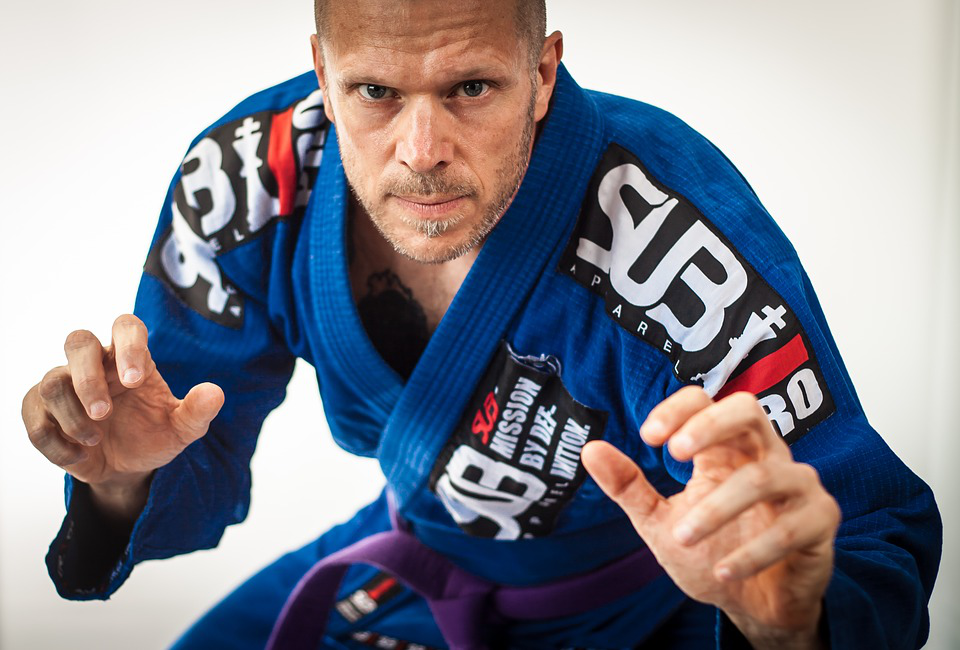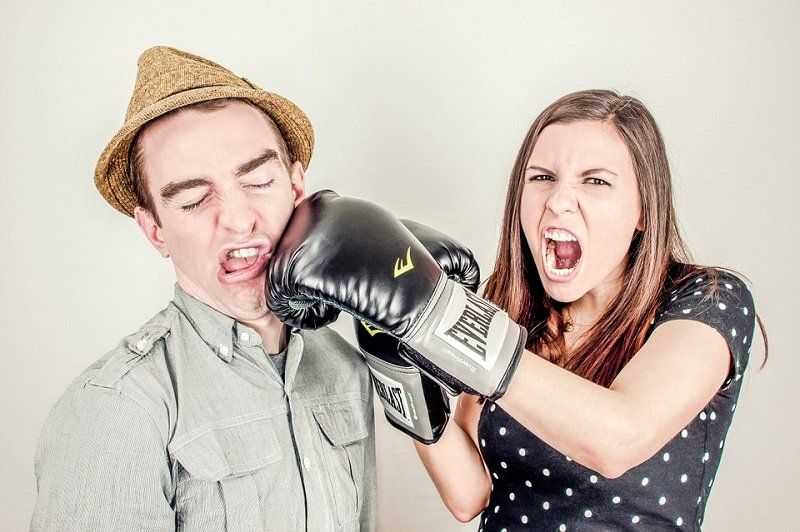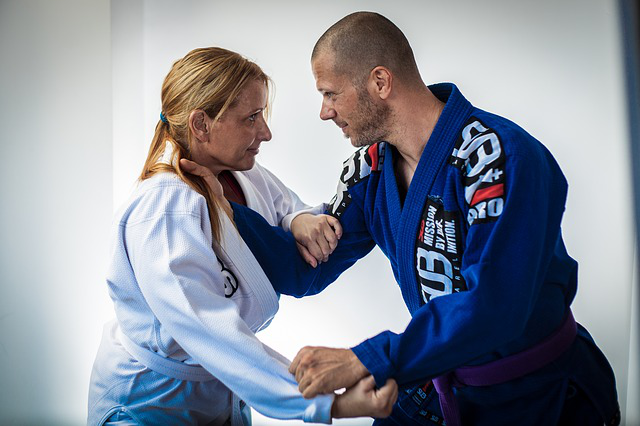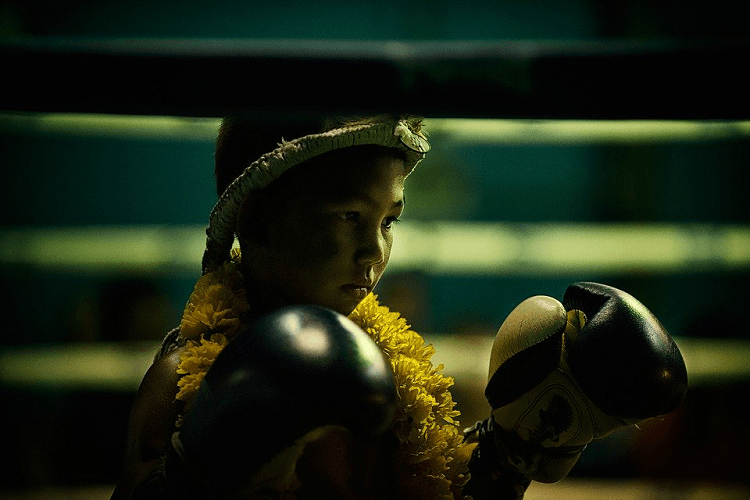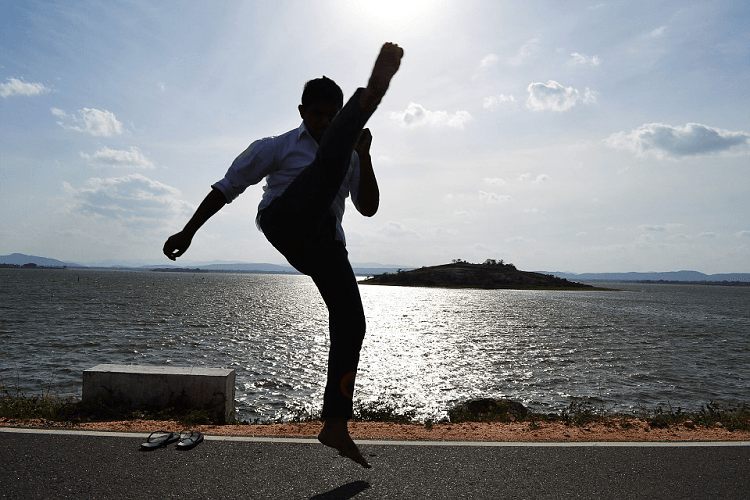The Self-Defense Tactical Volume: Episode 1 - Overview of the “Intangibles of Combat”
The “Intangibles of Combat” is the first in a series of blogs that examines the intangible tools that a martial artist must acquire to consider his/her training complete in any martial art. This series of blogs will examine key categories of violence, the importance of avoidance and de-escalation, as well as certain indicators present in your environment that strongly suggest a predatory attack or other violent encounter may be imminent.
In this introductory blog, we will examine the key “Intangible” categories, what they mean, and how greater understanding of them can benefit your overall approach to self-defense applications. Future blogs will break down these categories, and study Intangible techniques in more detail.
Overview
What makes a martial artist effective in a real-life street encounter? Is self-defense all about punching, kicking, grappling, and Jiu-Jitsu, or does a dedicated martial artist need other tools in the toolbox to complete his/her training? We believe that MMA is the basic foundation of any self-defense/self protection study, but are muscle, clever technique, and physical prowess the most important aspects of your martial arts skill set?
In answering these questions, you first must accept that we are all animals by nature and evolution provides animals with natural or situational cues for determining an array of threats and applying defensive guards. No animal in the wild will let a stranger get near it. When you walk through the forest and approach an animal, the animal will generally flee or strive to maintain a safe distance, rather than attack. When an animal in the wild leaves the shelter of the forest to drink at a river or lake, the animal instinctively “knows” when things do not feel right, and it flees. These defensive cues are based on the animals’ senses (sight, sound, smell, touch and taste) and various other indicators that the animal instinctively knows or has come to understand through direct experience.
As human beings, we are no different and evolution provides us with the same natural instincts to protect us and to equip us with the necessary tools for survival. We are naturally reserved when strangers approach us on the street, and if the encounter simply “doesn’t feel right”, we automatically revert to thoughts of a fight or flight response. This is not your imagination talking. These feelings of uneasiness are your natural evolutionary instincts telling you that something is wrong. You immediately pick-up on these indicators, and this ability to instinctively assess risk in order to act accordingly is there for a reason, so don’t ignore it. Being on your guard or in a state of heightened awareness is the first stage of being proactive in an environment where your survival or safety may be threatened.
An Attacker/Predator knows this, and will employ specific behaviors that allow him or her to get close to you (when you would otherwise flee like the wild animal), and convince you to further lower your natural defensive guard, once contact is initiated.
There are various types of potential assault, some of which are predatory/criminal in nature (e.g., robbery, assault, sexual predation), while others may be the result of insults or perceived disrespect, encountered during social interactions (bar-fights, road rage, and similar forms of violence resulting from social encounters). The Intangibles of Combat can be a powerful tool in addressing these many forms of violence, developing a strategy of defense, and formulating an appropriate response. An appropriate response is not developed through physical means alone. The proper response can only be determined through the synthesis of Observation, Strategy, and Awareness (our intangible tools).
Having high capacity in these three areas is the most valuable asset in your cognitive arsenal, and can help you defeat more opponents than any physical self-defense technique. You can often avoid risky situations by using what is commonly known as “street sense”, which generates a natural and instinctive self-preservation response by synthesizing these areas of study. The intangible tools discussed in this series of blogs are applicable to any form of violence (whether it be criminal, or social in nature), and learning to recognize the warning signs of pending violence in advance of the actual encounter can help you to gain an advantage when you are alone on the street.
The Tangibles and the Intangibles
Formulating a self-defense/self protection or a personal combat curriculum that is right for you will involve many different aspects, and the key consideration to emphasize is that there is no such thing as “off-the-shelf” software when it comes to Combatives and Self Defense. The curriculum must be tailored to the individual, and every individual will have different experiences, natural tendencies, and even physical capabilities that will necessitate a different approach for each person. The general rule follows the teachings of Bruce Lee, which dictate that you should certainly listen to what everyone has to say on the subject, but take what works for you, and discard the rest.
What is consistent for all individuals, regardless of their background or physical make-up, is the necessary focus on both the “tangibles” and the “intangibles” that comprise our self-defense tool-kit. The tangibles are the obvious elements of physical combat that predominantly include punching, kicking, grappling, restraints, and other forms of physical aggression as a response to violence. This type of response is prevalent in most systemized martial arts today. However, most people forget about the “intangibles” that are much more important than any tangible physical response. The intangibles can allow you to escape, intercede, preempt, diffuse, and de-escalate a situation that may be potentially harmful. But in all situations the goal is the same – to be smarter than the Predators on the street.
Relying on our smarts is the key to survival. As humans, we are the most dangerous animal on the planet with the power to easily dominate or destroy any other known creature in the wild. What many fail to observe is that while we are the dominant species, we are also the least equipped. We have no fangs or claws, no scales or venom, no extreme night vision capability, no fins to swim quickly, and we don’t have the speed or agility of the animal that runs on four legs to catch prey or quickly scramble up a tree to safety. What places us at the top of the food-chain is our intelligence and advanced cognitive abilities that provide us with reasoning, intellect, and the ability to problem-solve, make complex decisions and/or manipulate our environment to our choosing. Forgetting about our smarts in the subject of combat, is ignoring our most powerful weapon.
So, the Intangibles of Combat rely on our “thinking” skills (convergent/analytical thinking, divergent thinking, critical thinking, and creative thinking) rather than our brawn to get us out of a jam, or to avoid violence altogether. These Intangibles of Combat can be summarized in three broad categories that will be thoroughly explored in more detail in future episodes of this blog:
The Big 3
-
Situational Awareness & Strategy
-
Observation and Intelligence-gathering
-
De-escalation/Diffusion
Situational Awareness & Strategy (Observe and Learn): The name of this game is to use awareness to minimize your “Target Profile”. By minimizing your exposure to dangerous situations, you also minimize the likelihood that you will have to contend with a violent encounter (the proverbial no-brainer).
In looking to military application, we see that understanding our environment, observing certain advantageous positions, and formulating basic tactical strategies are the keys to victory in any military combat application, and the same principles apply to unarmed combat and Self Defense. Basic situational awareness can lead to simple strategies observed by Sun Tzu, such as placing the low sun behind you, maintaining the high ground, keeping a wall or obstacle to your back (keep the battlefield in front of you), or choosing the obvious path of least resistance. This principle may include developing basic strategies of attack, and maintaining a simple arsenal of easy-to-use “pre-emptive strike” techniques of choice. However, situational awareness can also involve common-sense decision-making, such as avoiding dangerous locations, being on your guard when questionable locations are unavoidable, and responding quickly and intelligently to abnormalities that arise in your natural surroundings (proactively respond before the encounter escalates to violence)
Some pre-emptive suggestions that will be explored in more detail in future SMAA-WKKJO blogs include:
-
Traveling with a friend when in unfamiliar surroundings
-
Avoiding a path near parked vehicles, trees and hedges, recessed doorways or other areas where a predator may be concealed
-
Staying closer to populated areas or crowds of people (predators do not want to reveal themselves and their actions in plain view of onlookers)
-
Casually crossing the street (or changing direction) to avoid threatening encounters/situations, or questionable locations
-
Appearing confident and moving with a purpose to provide the appearance of someone who is familiar with their surroundings.
Observation and Intelligence-Gathering: In military warfare, intelligence-gathering can be the key to winning or losing a battle. Understanding the enemy and developing a tactical strategy to thwart conflict relies upon our knowledge of the battlefield (and the enemy’s movements on that field of battle), so that a competent strategy can be formulated before the conflict begins.
When turning to the subject of Self-Defense, gathering relevant data and recognizing the warning signs of a pending attack can allow you to develop a strategy to pre-empt many violent encounters, whether by employing de-escalation techniques, pre-emptive strikes, or even by fleeing the scene or avoiding a location of potential danger. Many Combatives instructors refer to these observations as “Pre-Assault Indicators” or “Pre-contact Cues” that provide us with clear intelligence regarding a person’s intentions and/or mental and emotional state. Learning to recognize these warning signs can be more powerful than any physical tool or technique in your arsenal, and this important subject will be examined in future blogs on the Intangibles of Combat.
De-escalation and Reasoning: The ability to reason with an aggressor and de-escalate a situation is our most powerful weapon, and is the main aspect of the capacity of the human brain that differentiates us from other animals in the wild. This ability can help us mitigate most of the violence that we are likely to encounter in life, provided we have the patience and the will to adhere to some basic principles. Specifically, what is it that requires a physical response? Violence in a social setting (the violence of “ego”) is the most common form of violence that you are likely to encounter, but there is no reason to be sucked into this pitfall. It is also important to understand that like your physical training, learning to overcome your ego and employ de-escalation techniques will take hard work and constant training – it is not easy, because our ego and natural desire for social ranking in the pack is one of the most basic instincts that continues to dominate the choices and actions of the human species. Learning to overcome this ego will take a lifetime of hard work and constant effort.
Categories of Violence
Before we examine the Intangibles of Combat in more detail, let us first look at the subject of violent encounters, and the main categories of violence that exist in our society (Social Violence, Targeted Violence, Random Violence). From there, we can then develop a strategy for addressing conflict, based on the form of violence we are facing. Understanding the many forms of violence will also help us to better-focus our training in the areas that have a higher frequency of occurrence in society.
What should I focus on? Although violence occurs in many forms, violence can be grouped into three broad categories (discussed below), based on both the likelihood of occurrence, and one's ability to control the situation. Here is a simple rule to assist you in prioritizing your training efforts. It is called the: 90/10 philosophy. This means that you should spend 90 percent of your time training for the situations that are most likely to occur, based on your current social circumstances, and 10 percent of your time training for situations that are the least likely to occur in your current circumstances. By broadly categorizing the key types of violence that one is likely to encounter, one can better assess what to train for, and how to address the majority of situations encountered.
In making the assessment of which form of violence to focus on for your purposes, you should consider that your exposure-risk to a specific type of violent encounter may change, depending upon your social surroundings/interactions or occupation. For example, a law enforcement officer or a bar/club bouncer is much more likely to encounter different types of violence than an accountant, school teacher, or business executive. Similarly, a military soldier will be exposed to certain forms of violence more frequently than civilians. A person moving in the shadows as a street-level criminal will also have a different target profile and exposure rate to certain forms of violence than your average citizen. Understanding “who you are” and managing your social/occupational surrounding/interactions is an important aspect to reducing your target profile, and minimizing your exposure to certain forms of violence (or better preparing for them).
Social Violence (Most likely Encounter): The nature of Social violence is that it is the result of the progressive escalation of a social encounter. The incident is usually the outcome of social interactions, often between two people who have no overtly criminal intent prior to the encounter. Examples include argumentative encounters that escalate into bar fights, arguments/disagreements on the street, or even road-rage incidents that escalate into physical violence. This can be compared to a classic schoolyard or playground brawl, but on an adult level (with adult consequences). The unpleasant fact is that social violence is the most frequent type of violence that you are likely to encounter in your life (let’s face it – we have all been in situations like this at some point or another). The good news is that this type of violence is controllable most of the time by using basic, de-escalation/diffusion techniques. If you are not dealing with a true criminal encounter, but rather, you are dealing with an ordinary and generally good person who is just having a really bad day, the situation can almost certainly be diffused with a little effort, patience, and adherence to basic de-escalation principles.
This means that the violence you are most likely to encounter in your life is also the easiest violence for you to control, and understanding this is a powerful “intangible” weapon for your self-protection arsenal.
Targeted Violence (Less Likely Encounter): Targeted violence is an act of violence involving criminal or predatory intent. This occurs when a predator has selected you as a target of violence, due to perceived weaknesses or vulnerabilities. Examples of Targeted Violence include muggings, sexual assaults, carjacking, kidnappings, gang-related violence, and similar forms of criminal activity or predation. Targeted Violence is the most problematic form of violent encounter, because de-escalation/diffusion techniques are largely ineffective against someone whose main goal is to commit violence against you. However, learning about basic human behavior, recognizing targeting/pre-contact ques, minimizing your “target profile”, and developing basic situational awareness, can go a long way towards helping you avoid a violent encounter.
Although targeted violence is much more difficult to control then social violence, it is also much less likely to occur in most social circles, and the Intangibles of Combat can allow you to either avoid the encounter altogether, or escape the situation quickly if you have been targeted by a predator.
Random Violence (Least Likely Encounter): Random violence comes in many forms, but the key defining characteristic is that you (as an individual) are not necessarily the individual target. Although random violence can be imposed upon a particular person or group of people, the victims are often simply in the “wrong place at the wrong time”, and become a victim of circumstance - the target and intent of the perpetrator is not always clear. Some examples of Random Violence can include spree-killings or similar active shooter situations where random violence is committed in the community. It may involve a random attack by an agitated or mentally disturbed individual. Random Violence may also include organized attacks against factions, organization, or specific groups where the individual victims are not specifically selected (they are simply at the location when the violence erupts). The clear difference in defining random violence is that you as an individual are rarely ever selected as a “Target” based on perceived weaknesses and vulnerabilities. Instead, you are an unfortunate victim of circumstance who has little ability to control your proximity to the perpetrator(s).
The bad news is that Random Violence is very difficult to control once you encounter it. Most preventive methods involve avoiding potential high-risk situations or locations – but, when the violence erupts, your ability to control the situation is limited. Strategy relies primarily on the idea that you, as a lone individual in a group, are not likely to have been individually selected as a target, and thus, survival typically involves strategies to flee the scene (or to minimize collateral damage). The good news is that a random violence encounter is also the least likely situation you will ever encounter in the street.
As we will examine in future episodes, understanding these various forms of violence can help you to formulate your strategy - a strategy that must be different, based on the type of violent encounter. Said differently, you don’t want to open the toolkit and bring a shovel, if the job requires you to hammer a nail (rather than dig a hole). Violence can be thought of as a wild animal, and understanding the type of animal that you are facing (the category of violence) can help you to “bring the right tool for the right job at the right time”.
* * *
This is the first in a series of blogs on the “Intangibles of Combat”. Future episodes will explore these intangibles in much more detail, including the keys to minimizing your target profile when facing these categories of violence, diffusing potentially violent encounters, and recognizing pre-contact cues/pre-attack cues that give you advance-warning that violence may be about to erupt. Our goal is to educate you on the most important aspect of your self-defense/self-protection toolbox.
